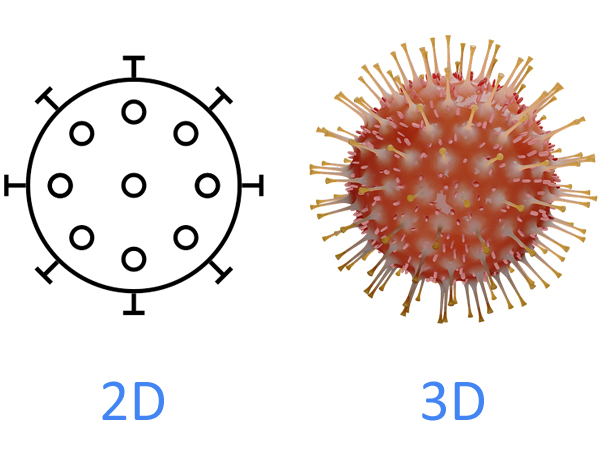The difference between 3D and 2D is a topic that comes up often with many misconceptions. What are the differences? Is one better than the other? Which should you use for your next project? Let’s answer these questions to clear this issue up once and for all.
Table of Contents
What is 2D and 3D?
2D is the use of two dimensions to represent images like paintings and drawings. Modern graphics cards can create 3D effects using 2D techniques for some types of applications but this requires more power from the computer’s processor than traditional 3D rendering does.
3D produces the illusion of depth in an image. The term “3-dimensional” refers to a three-dimensional representation on a two-dimensional surface, such as those produced by stereographic projection or perspective drawing.
What is the Difference between 3D and 2D?

| Aspect | 3D | 2D |
|---|---|---|
| Dimensions | X, Y, Z axes | X and Y axes only |
| Depth | Has depth perception | Lacks depth |
| Realism | More realistic representation | Less realistic, flat |
| Complexity | Generally more complex | Usually simpler |
| File size | Typically larger | Usually smaller |
| Processing power | Requires more | Requires less |
| Applications | Games, CAD, VR/AR, simulations | Traditional art, UI design, print media |
| Learning curve | Steeper | Generally easier |
| Rendering time | Longer | Shorter |
| Flexibility | More versatile for multiple views | Limited to single perspective |
When it comes to graphic design, the difference between three-dimensional and two-dimensional representation is crucial. A good example of this are paintings vs. drawings: a drawing can be easily drawn on paper with only one dimension (two for height), while a painting requires at least some depth in order to be seen properly.
The same happens in movies or games – our brain automatically processes information from both eyes, creating that sensation of “depth” which distinguishes us from flat images such as screenshots or digital photos taken by cameras.
While we might not always perceive what’s going on clearly when watching an animation without stereoscopic vision because objects appear to pop out more than they should if viewed through glasses; there’s no denying that without them, everything looks flat and lifeless.
In other words, the difference between three-dimensional and two dimensional representations is that while a drawing can be drawn with only one dimension (two for height), a painting requires at least some depth in order to be seen properly; or without stereoscopic vision movies/games tend to appear as if they are made using screenshots instead of animation) because objects pop out more than what you would see when viewing them through glasses which creates life into an image.
And finally, this all brings us back to graphic design: not only does it have power over how people perceive things but also affects their moods too. There’s nothing like looking up at the sky on a beautiful day filled with dynamic color contrasts and feeling like you can reach out and touch the clouds.





